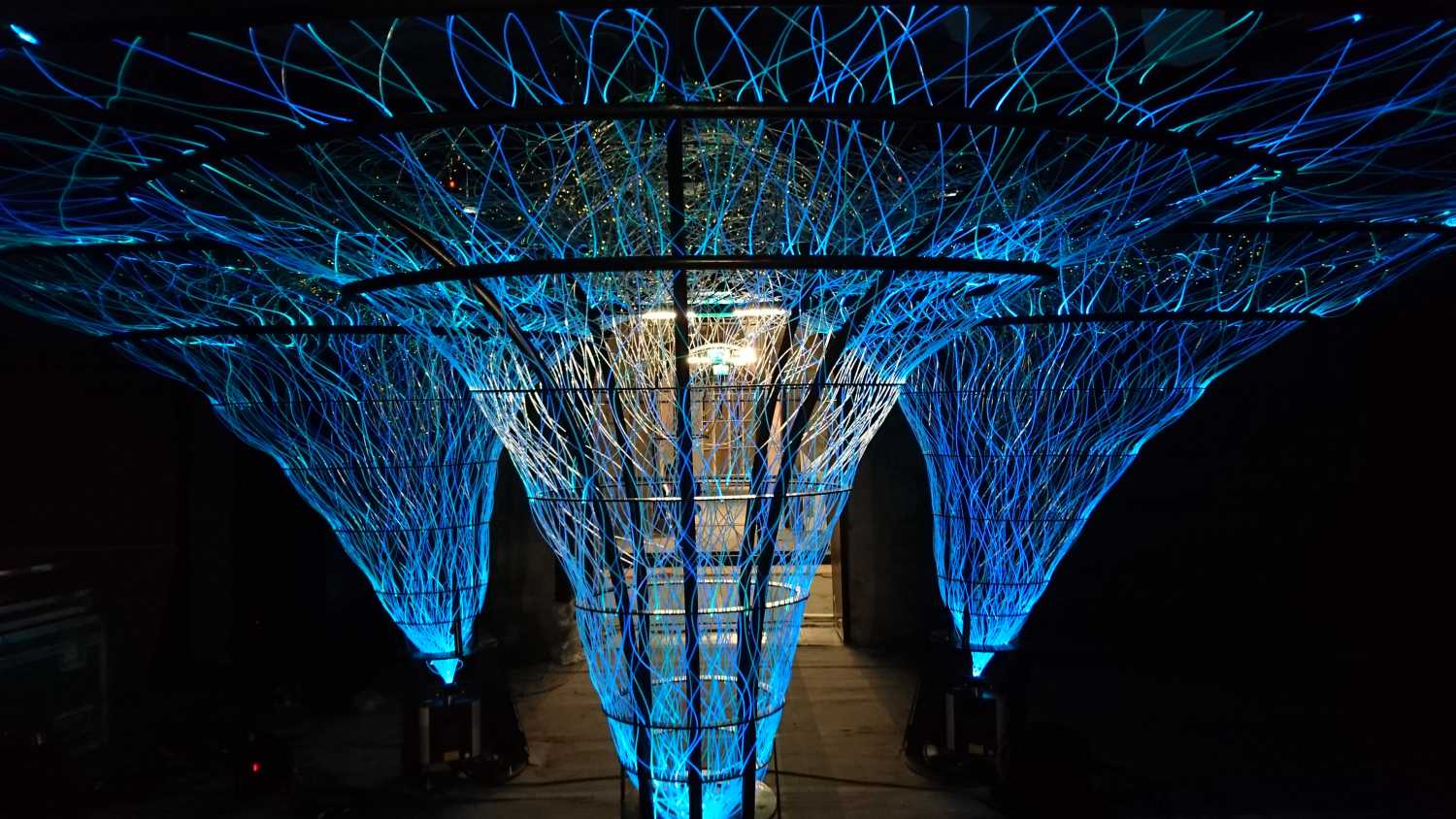Specialz are EPIC in Dublin
- Details

Amongst the myriad of rooms dedicated to the global influence of the Irish culture through migration is a space entitled Science & Innovation. Within this gallery, visitors are familiarised with those of Irish descent who have been key in the development of scientific and technology progress. As an introduction to the mysteries of the Irish psyche, the Synapse provides a spectacular visual interpretation of the brain’s inner workings. This artistic impression that also provides light and visual movement to the gallery was designed by Adam Grater.
“There was indeed a dual purpose to this installation,” opens Grater. “It’s title, The Synapse, explains what it represents but it also creates atmosphere and provides ambience in the way it physically illuminates the space. Once I had an idea of what I wanted I went to Dave Smith at Specialz to turn my thoughts into a workable reality.”
Creating bespoke visual structures is what Specialz is all about as Grater himself comments, “I went to Dave and his team for this as I’ve used their expertise in the past for other ‘one-off’ pieces and you always get what you pay for with no messing. Plus, there’s always a good lunch or two along the way.”
The metal frame that supports the lighting was assembled by Scena and then the Specialz team hand knitted or weaved the fibres and LED strings through the framework to create the image of the brain’s neurones and synapses at work.
“To simulate the synapses, we suggested falling back to an old technology of fibre optics as light engines were now available with LED bulbs which had 20-25,000 hours of available lifespan. To give the impression of the synapses, over 1500m of side emitting transparent fibre optics together with 1500m of cracked fibre with 24 x 10m strings of micro-LED to simulate the neurons firing were powered off a Specialz LED controller mounted in the truss.”
Working with Scena, six light engines were floor mounted in the synapse support structure with three engines and the Specialz LED Controller were mounted on an existing services truss above the synapse support structure. It took 14 days to craft the effect onsite and weave an intricate web of fibre optic and micro-Led cables within the three synapse supports ensuring that the look was pretty awe-inspiring from every way it was approached and viewed.”
When completed, the whole installation was programmed by Mark Gallione of High Res Lighting in Dublin.
“The results are really stunning and the museum is very happy with the way the installation complements the objectives of the gallery,” reports Grater. “This is a permanent installation so it needs to be fail-safe in terms of reliability and performance. The museum is well into its second year and I have yet to hear of any issues.”
“As ever,” concludes Grater, “Specialz stepped up to the mark and produced exactly what was required, on time and on budget. A total pleasure and one I will be repeating.”
(Jim Evans)

















